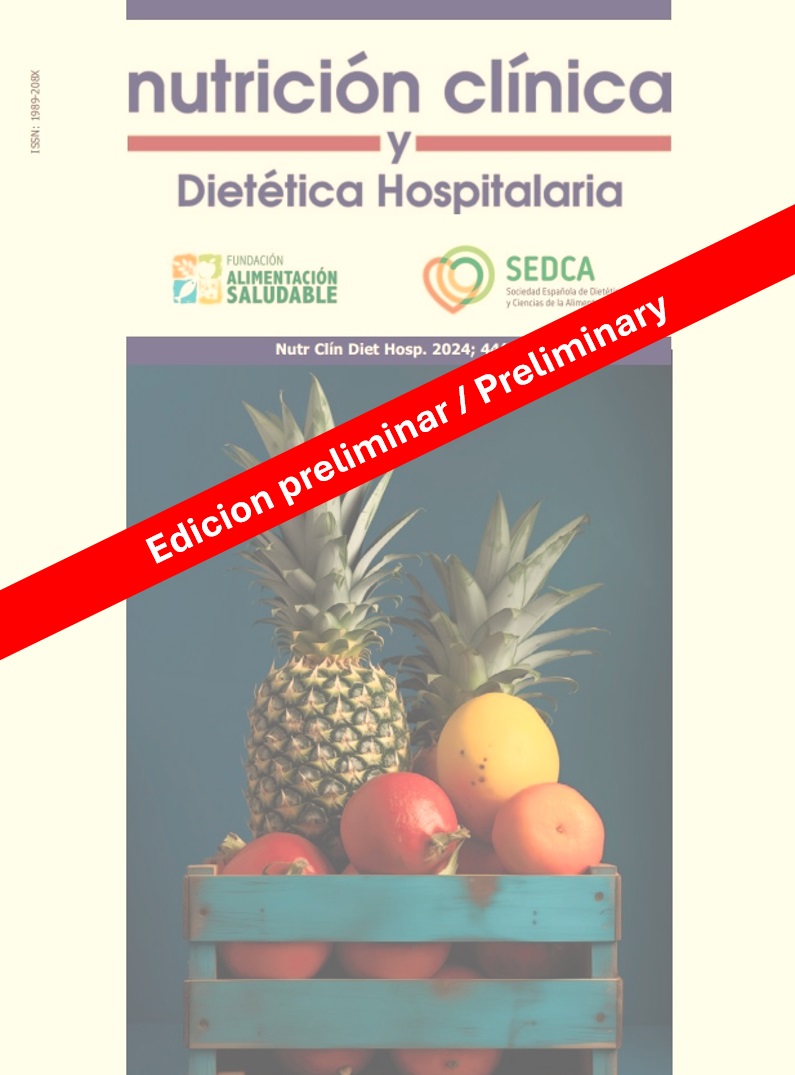Relationship between nutritional status, physical activity, macronutrient intake and glycemic profile of prediabetic women in rural areas of Indonesia.
DOI:
https://doi.org/10.12873/444putriPalabras clave:
Physical activity, prediabetes, glycemic profile, Nutritional Status, rural area, macronutrientsResumen
Prediabetes increases the risk of developing type 2 diabetes mellitus (T2DM). In rural areas, changes in lifestyle and diet influence the prevalence of prediabetes. This study evaluated the association of nutritional status, physical activity, and macronutrient intake with glycemic profile in prediabetic women in rural areas. The cross-sectional study included 26 women aged 40-64 years with prediabetes. Data were collected on demographics, food consumption, physical activity, and clinical parameters. Statistical analysis used Pearson and Spearman tests. Physical activity showed a positive significant correlation with BMI (r = 0.41, p = 0.037), and BMI was significantly associated with HOMA-IR (r = 0.465, p = 0.021) and QUICKI (r = -0.429, p = 0.036). However, energy, carbohydrate, protein, fat, and fiber intake were not significantly correlated with glycemic indicators or plasma insulin. Physical activity contributed to the increase in BMI and affected insulin resistance and sensitivity. Macronutrient intake was not significantly correlated with glycemic profile. Public health interventions need to focus on increasing physical activity to prevent T2DM.
Referencias
Dong Y, Zhang B, Sun W, Xing Y. Intervention of Prediabetes by Flavonoids From Oroxylum indicum [Internet]. 2nd ed. Bioactive Food as Dietary Interventions for Diabetes. Elsevier Inc.; 2019. 559–575 p. Available from: http://dx.doi.org/10.1016/B978-0-12-813822-9.00036-9 DOI: https://doi.org/10.1016/B978-0-12-813822-9.00036-9
PDI dan PERKENI. Pedoman Pengelolaan dan Pencegahan Prediabetes DiIndonesia 2019. Surabaya: Airlangga University Press; 2020.
Echouffo-Tcheugui JB, Selvin E. Prediabetes and What It Means: The Epidemiological Evidence. Annu Rev Public Health. 2020;42:59–77. DOI: https://doi.org/10.1146/annurev-publhealth-090419-102644
K.A.M White, Daneshvari S, Lilyquist J, Luo L, Steffen L., Bivin A, et al. Prediabetes: The Variation between HbA1c and Fasting Plasma Glucose. Physiol Behav. 2017;176(1):139–48.
Wang B, Mu X-L, Zhao J, Jiang H-P, Li S-S, Yan G, et al. Effects of lifestyle interventions on rural patients with type 2 diabetes mellitus. World J Diabetes. 2020;11(6):261–8. DOI: https://doi.org/10.4239/wjd.v11.i6.261
Vatcheva KP, Fisher-Hoch SP, Reininger BM, McCormick JB. Sex and age differences in prevalence and risk factors for prediabetes in Mexican-Americans. Diabetes Res Clin Pract [Internet]. 2020;159:107950. Available from: https://doi.org/10.1016/j.diabres.2019.107950 DOI: https://doi.org/10.1016/j.diabres.2019.107950
World Health Organization. Definition and Diagnosis of Diabetes Mellitus and Intermediate Hyperglycemia. New Compr Biochem. 2006;1(C):161–214.
PERKENI. Pedoman Pengelolaan dan Pencegahan Diabetes Melitus Tipe 2 Dewasa di Indonesia 2021 [Internet]. Global Initiative for Asthma. PB. PERKENI; 2021. 104 p. Available from: www.ginasthma.org.
Matthews DR, Hosker JP, Rudenski AS, Naylor BA, Treacher DF, Turner RC. Homeostasis model assessment: insulin resistance and β-cell function from fasting plasma glucose and insulin concentrations in man. Diabetologia. 1985;28(7):412–9. DOI: https://doi.org/10.1007/BF00280883
Galicia-Garcia U, Benito-Vicente A, Jebari S, Larrea-Sebal A, Siddiqi H, Uribe KB, et al. Pathophysiology of type 2 diabetes mellitus. Int J Mol Sci. 2020;21(17):1–34. DOI: https://doi.org/10.3390/ijms21176275
Saad R, Deschamps T, Bernard P. Physical activity and body mass index: A study on the correlation between physical activity and body mass index in adults. J Phys Act Heal. 2018;15(4):310–8.
Zhang X, Wang Y, Chen Y. Effect of physical activity on body mass index and waist circumference: A meta-analysis. Obes Rev. 2018;19(12):1670–81.
Hamasaki H. The Physical Activities in Obesity BT - Obesity: Clinical, Surgical and Practical Guide. In: Ahmad SI, editor. Cham: Springer International Publishing; 2024. p. 169–84. Available from: https://doi.org/10.1007/978-3-031-62491-9_13 DOI: https://doi.org/10.1007/978-3-031-62491-9_13
Garcia R, Munoz L, Ruiz A. Impact of physical exercise on body composition and metabolic parameters: A review of recent evidence. Clin Nutr. 2020;39(2):377–86.
Kirk EP, McMahon M. Body Mass Index, Insulin Resistance, and Glucose Metabolism. J Clin Endocrinol Metab. 2022;107(4):1237–46.
Zhao Y, Wu X. Association of Body Mass Index with Insulin Sensitivity and Insulin Resistance. World J Diabetes. 2016;7(14):328–38.
Weyer C, Bogardus C. Obesity and insulin resistance: a review of the pathophysiology and therapeutic strategies. Clin Diabetes. 1999;17(1):10–8.
Katz A, Nambi SS, Mather K, Baron AD, Follmann DA, Sullivan G, et al. Quantitative insulin sensitivity check index: a simple, accurate method for assessing insulin sensitivity in humans. J Clin Endocrinol Metab. 2000;85(7):2402–10. DOI: https://doi.org/10.1210/jcem.85.7.6661
Descargas
Publicado
Licencia
Derechos de autor 2024 Nutrición Clínica y Dietética Hospitalaria

Esta obra está bajo una licencia internacional Creative Commons Atribución-NoComercial-SinDerivadas 4.0.
Los lectores pueden utilizar los textos publicados de acuerdo con la definición BOAI (Budapest Open Access Initiative)







